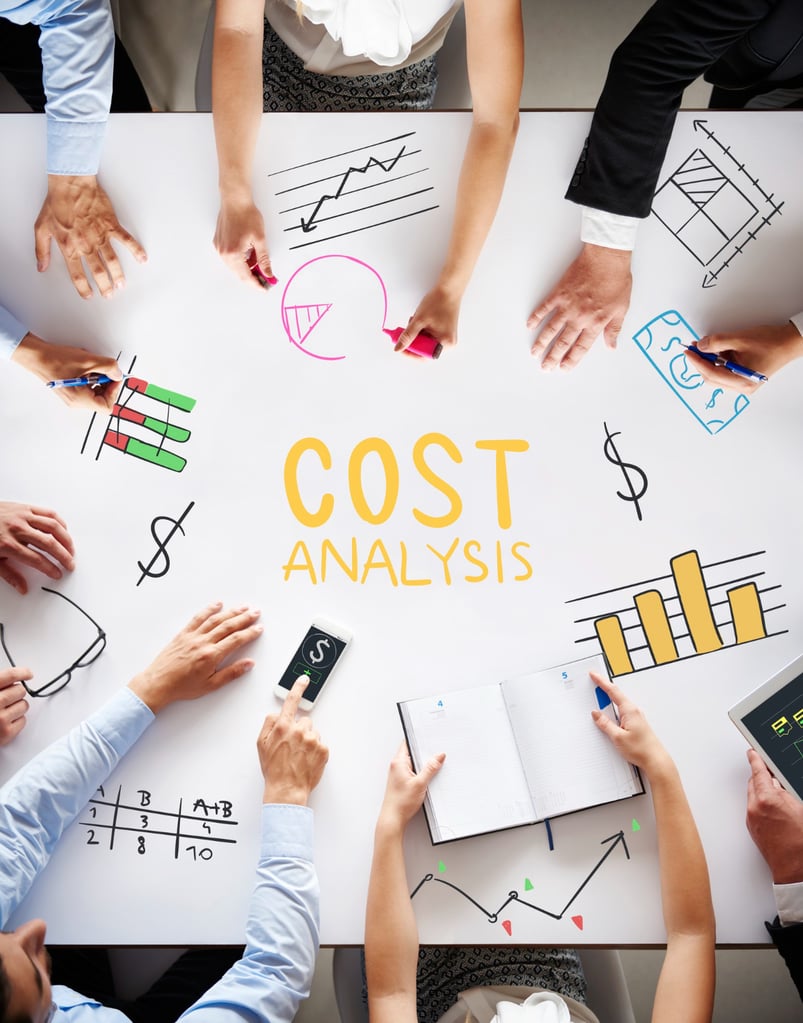Mastering Efficiency: Unveiling Proven Supplier Cost Reduction Strategies for Procurement Success

Introduction: The Importance of Supplier Cost Reduction Strategies in Procurement
Cost reduction is a critical aspect of procurement that can greatly impact the overall efficiency and profitability of a business. By effectively managing and reducing costs associated with suppliers, organizations can optimize their procurement processes and achieve significant savings. This article will explore the various strategies and techniques that can be employed to achieve supplier cost reduction in procurement.
Cost reduction in procurement is essential for several reasons. Firstly, it directly impacts the bottom line of a business. By reducing costs, organizations can increase their profit margins and allocate resources to other areas of the business. Secondly, cost reduction improves the overall efficiency of the procurement process. By streamlining operations and eliminating waste, organizations can save time and effort, allowing them to focus on more strategic activities. Lastly, cost reduction enhances the competitiveness of a business. By reducing costs, organizations can offer more competitive prices to their customers, giving them an edge in the market.

Understanding the Procurement Process: Key Steps and Challenges
The procurement process involves several key steps, including identifying needs, sourcing suppliers, negotiating contracts, and managing relationships. Each step presents its own set of challenges that can hinder cost reduction efforts.
One common challenge in procurement is the lack of visibility into supplier performance. Without accurate data and insights into supplier performance, organizations may struggle to identify areas for cost reduction. It is crucial to establish clear metrics and key performance indicators (KPIs) to measure supplier performance and identify opportunities for improvement.
Another challenge in procurement is the complexity of the supply chain. With multiple suppliers and stakeholders involved, it can be difficult to effectively manage costs and ensure accountability. Organizations must establish robust contract management processes to ensure compliance and mitigate risks.
Identifying Cost Reduction Opportunities: Analyzing Supplier Performance and Market Trends
Analyzing supplier performance is a crucial step in identifying cost reduction opportunities. By evaluating key metrics such as quality, delivery time, and pricing, organizations can identify underperforming suppliers and negotiate better deals. It is important to establish a systematic approach to supplier evaluation and regularly review performance to ensure continuous improvement.
In addition to analyzing supplier performance, organizations should also monitor market trends to identify cost reduction opportunities. By staying informed about market conditions, organizations can leverage market trends to negotiate better prices and terms with suppliers. For example, if there is an oversupply of a particular product in the market, organizations can negotiate lower prices or explore alternative suppliers.
Negotiation Techniques: Tips for Achieving Better Deals with Suppliers
Negotiation is a critical skill in procurement that can greatly impact cost reduction efforts. By employing effective negotiation techniques, organizations can achieve better deals with suppliers and reduce costs.
One key technique in negotiation is to establish clear objectives and priorities. By clearly defining what you want to achieve and what is most important to your organization, you can focus your negotiation efforts and increase your chances of success. It is also important to gather as much information as possible about the supplier and the market to strengthen your bargaining position.
Another important technique in negotiation is to create win-win situations. By understanding the needs and interests of both parties, you can identify areas of mutual benefit and propose solutions that satisfy both parties. This collaborative approach can help build strong and long-lasting relationships with suppliers.
Contract Management: Ensuring Compliance and Accountability
Contract management is a critical aspect of procurement that ensures compliance and accountability. By effectively managing contracts, organizations can mitigate risks, enforce terms and conditions, and achieve cost reduction.
One key aspect of contract management is establishing clear and concise contracts. Contracts should clearly outline the rights and obligations of both parties, including pricing, delivery terms, quality standards, and dispute resolution mechanisms. By ensuring that contracts are well-drafted and comprehensive, organizations can avoid misunderstandings and disputes that can lead to additional costs.
Another important aspect of contract management is monitoring and enforcing compliance. Organizations should establish processes and systems to track supplier performance and ensure that suppliers are meeting their contractual obligations. By regularly reviewing supplier performance and addressing any issues or non-compliance, organizations can maintain accountability and achieve cost reduction.
Supplier Relationship Management: Building Strong and Collaborative Partnerships
Supplier relationship management is a critical component of procurement that focuses on building strong and collaborative partnerships with suppliers. By fostering positive relationships with suppliers, organizations can achieve cost reduction through improved communication, collaboration, and trust.
One key aspect of supplier relationship management is effective communication. By establishing open and transparent lines of communication with suppliers, organizations can better understand their needs and challenges, and work together to find solutions. Regular meetings, site visits, and feedback sessions can help build rapport and strengthen the relationship.
Another important aspect of supplier relationship management is collaboration. By involving suppliers in the decision-making process and seeking their input and expertise, organizations can tap into their knowledge and experience to identify cost reduction opportunities. Collaborative initiatives such as joint cost reduction programs or process improvement projects can lead to significant savings for both parties.
Strategic Sourcing: Finding the Right Suppliers and Products for Your Business
Strategic sourcing is a proactive approach to procurement that focuses on finding the right suppliers and products for your business. By strategically selecting suppliers and products, organizations can achieve cost reduction through improved quality, pricing, and delivery.
One key aspect of strategic sourcing is conducting thorough market research. By understanding the market landscape, including supplier capabilities, pricing trends, and product availability, organizations can make informed decisions about which suppliers to engage with. This research can help identify potential cost reduction opportunities and ensure that the selected suppliers align with the organization’s strategic goals.
Another important aspect of strategic sourcing is supplier evaluation and selection. By establishing clear criteria for supplier evaluation, organizations can objectively assess potential suppliers based on factors such as quality, pricing, delivery time, and financial stability. By selecting suppliers that meet these criteria, organizations can achieve cost reduction through improved performance and reliability.
Total Cost of Ownership: Calculating the Real Cost of Procurement and Identifying Savings Opportunities
Total cost of ownership (TCO) is a comprehensive approach to procurement that takes into account all costs associated with acquiring and owning a product or service. By calculating the real cost of procurement, organizations can identify savings opportunities and achieve cost reduction.
TCO includes not only the purchase price of a product or service but also other costs such as transportation, storage, maintenance, and disposal. By considering these additional costs, organizations can make more informed decisions about which suppliers and products to engage with. For example, a product with a lower purchase price may have higher maintenance costs, making it less cost-effective in the long run.
Calculating TCO requires a thorough analysis of all cost components and their respective impact on the overall cost of procurement. By conducting a detailed cost analysis, organizations can identify areas for cost reduction and make more informed decisions about supplier selection and product choices.
Lean Procurement: Streamlining Processes and Eliminating Waste
Lean procurement is an approach to procurement that focuses on streamlining processes and eliminating waste. By adopting lean principles, organizations can achieve cost reduction through improved efficiency and productivity.
One key principle of lean procurement is process optimization. By mapping out the procurement process and identifying bottlenecks and inefficiencies, organizations can streamline operations and eliminate waste. This can be achieved through process automation, standardization, and continuous improvement initiatives.
Another important principle of lean procurement is inventory management. By optimizing inventory levels and reducing excess stock, organizations can minimize carrying costs and improve cash flow. This can be achieved through demand forecasting, supplier collaboration, and just-in-time inventory management techniques.
Technology Solutions: Leveraging Automation and Analytics for Procurement Efficiency
Technology solutions play a crucial role in achieving procurement efficiency and cost reduction. By leveraging automation and analytics, organizations can streamline processes, improve data accuracy, and make more informed decisions.
One key technology solution for procurement is e-procurement software. E-procurement software automates the procurement process, from requisition to payment, reducing manual tasks and improving efficiency. It also provides real-time visibility into procurement data, allowing organizations to make data-driven decisions and identify cost reduction opportunities.
Another important technology solution for procurement is analytics software. Analytics software enables organizations to analyze large volumes of procurement data and identify patterns, trends, and insights. By leveraging analytics, organizations can identify cost reduction opportunities, optimize supplier performance, and make more informed decisions about supplier selection and negotiation.
Continuous Improvement: Measuring Performance and Implementing Best Practices
Continuous improvement is a critical aspect of procurement that focuses on measuring performance and implementing best practices. By regularly reviewing and improving procurement processes, organizations can achieve cost reduction and enhance efficiency.
One key aspect of continuous improvement is performance measurement. By establishing clear metrics and KPIs, organizations can track performance and identify areas for improvement. Regular performance reviews and benchmarking against industry standards can help identify cost reduction opportunities and drive continuous improvement.
Another important aspect of continuous improvement is the implementation of best practices. By adopting industry-leading practices and methodologies, organizations can optimize their procurement processes and achieve cost reduction. This can include implementing standardized processes, leveraging technology solutions, and adopting lean principles.
Conclusion: Mastering Efficiency in Procurement through Supplier Cost Reduction Strategies
In conclusion, cost reduction is a critical aspect of procurement that can greatly impact the overall efficiency and profitability of a business. By effectively managing and reducing costs associated with suppliers, organizations can optimize their procurement processes and achieve significant savings. Through supplier cost reduction strategies such as analyzing supplier performance, negotiating better deals, implementing effective contract management, building strong supplier relationships, strategic sourcing, calculating the total cost of ownership, lean procurement, leveraging technology solutions, and continuous improvement, organizations can master efficiency in procurement and achieve cost reduction. By adopting these supplier cost reduction strategies and techniques, organizations can enhance their competitiveness in the market and achieve long-term success.

